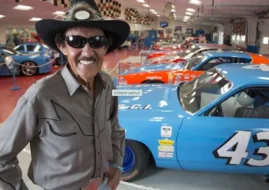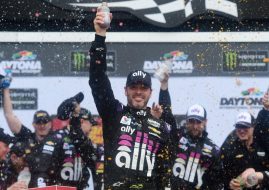Understanding NASCAR Race Strategies: What Makes a Winning Team?
When most people think of NASCAR, they picture fast cars whipping around the track, drivers pushing the limits, and high-speed drama. But behind every thrilling race lies a series of complex strategies that can mean the difference between victory and a disappointing finish. These strategies go far beyond stepping on the gas. A winning NASCAR team meticulously crafts and adjusts plans based on data, track conditions, and their competitors. For fans and enthusiasts, understanding these race-day strategies can deepen the excitement—and perhaps offer insight into predicting race outcomes.
Pit Stop Timing: The Ultimate Gamble
Pit stops are one of the most critical elements in any NASCAR race. It’s a delicate balance of timing, precision, and execution. Teams must decide when to pit for fuel, tires, and repairs, and doing so at the wrong time can cost precious seconds and track position. For example, pitting too early might mean returning to the pits later in the race, while pitting too late could result in worn-out tires or running out of fuel before the next stop.
A well-timed pit stop is almost like gambling—teams take a calculated risk, knowing that every second spent in the pit lane feels like an eternity. Some teams might opt for a quick “splash and go” to top off fuel but skip tire changes if they’re confident in their car’s durability. Others might gamble by staying out longer to avoid a traffic jam in the pits, hoping they can make up ground later. For fans, especially those predicting race outcomes, pit stop strategies can be a pivotal moment to watch, as a single misstep can drastically shift a race’s momentum.
Strategy Meets the Fans’ World
For fans, race strategies aren’t just something to admire—they’re something to predict. In recent years, many fans have also started testing their knowledge and instincts by participating in racing pools and placing bets on who will win or how many laps a driver will lead. Understanding the intricacies of pit stops, tire wear, fuel management, and drafting can give fans an edge in making more informed choices.
While betting isn’t the focus, it’s hard to ignore that many racing enthusiasts apply their strategy insights when considering potential race outcomes on the best NASCAR betting sites online. By keeping an eye on how a team’s strategic decisions unfold during a race, fans can gain a better understanding of which drivers are primed for success.
Tire Management: When to Push and When to Hold Back
Tires play a massive role in determining a NASCAR team’s success. Different tracks, weather conditions, and the number of laps dictate how aggressively teams can push their tires. Worn tires may cost speed, but changing them too often sacrifices time.
Race engineers study track conditions to understand tire wear patterns, giving drivers guidance on how hard to push. On short tracks with more braking, tire wear is faster, requiring more frequent stops. On larger ovals with smoother surfaces, tires last longer, and teams may choose to stay out longer between pit stops. This delicate balance between speed and tire preservation can keep drivers in the hunt for victory—or leave them trailing.
Fuel Strategy: Calculating Risk and Reward
Running out of fuel before the finish line is a nightmare scenario for any NASCAR team. However, fuel management isn’t just about making sure there’s enough gas in the tank to finish the race. It’s about when to refuel, how much to take on, and whether or not to gamble by stretching fuel reserves in a close race.
In some instances, teams opt for a strategy called “fuel mileage racing.” This involves conserving fuel by making small adjustments to the car’s performance—such as easing off the throttle on straightaways—to go further between pit stops. Sometimes this approach can help teams jump several positions while competitors are busy refueling.
Drafting: The Art of Slipstreaming
Another vital aspect of NASCAR race strategy is drafting, where one car closely follows another to reduce air resistance. By staying in the slipstream of the car ahead, drivers can save fuel and increase their speed with less effort. Drafting is particularly effective on larger tracks like Daytona or Talladega, where speeds can exceed 200 mph.
Drivers and teams communicate constantly to find drafting partners, often working with cars from the same manufacturer or teams that have formed alliances. However, the dynamics of drafting can change rapidly, especially when drivers vie for the lead. At any moment, a driver might decide to break away from their drafting partner, trying to slingshot ahead for a position. Fans who can read the drafting strategies unfolding in real-time gain an added layer of insight into the race’s flow.
Adapting to Changing Track Conditions
One of the most unpredictable elements in NASCAR is the track itself. Heat, humidity, rain, and even rubber buildup on the track can affect a car’s grip and performance. Teams must constantly adjust their strategy to account for these variables, tweaking the car’s setup to optimize it for the evolving conditions.
A cloudy day might cool the track, giving the tires better grip, while a hot, sunny day could make the surface slicker and harder to manage. When rain looms, teams may gamble by staying out longer, hoping for a race stoppage. Fans who follow these weather-related variables often make more informed predictions about how certain teams and drivers will handle the changes.






